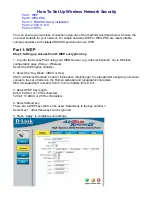
4
Cisco Aironet Series 1700/2700/3700 Access Point Deployment Guide
Cisco Aironet Series 3700 Access Point
Figure 64
Example of Channel Usage in 2.4 and 5 GHz (Two Channels used if 40 MHz)
3.
Try to determine which clients are going to be used and check the coverage using those clients. For example, a PDA or
Wi-Fi phone might not have the same range as a notebook or tablet.
Tip
Verify coverage using the worst performing clients that you intend to deploy.
4.
If you require 3 spatial stream coverage for the fastest throughput, and you are looking for the best BYOD experience, the
Cisco Aironet 3700 with ClientLink 3.0 is best in class. Additionally, the 3600 Series APs with ClientLink 2.0 will perform
better than the AP 3500. The AP 3600 and AP 3700 can beamform to 802.11n and legacy 11a/g clients. So, it is important
to understand the data requirements if you are mixing Cisco Aironet 1260, 3500, and 3600 Series Access Points in the same
areas.
5.
While site surveys are generally recommended, if the design is done at half power and Cisco RRM is in place, sometimes
a limited site survey (coverage check) is adequate for smaller venues. If it is a very challenging environment such as train
connectivity, Gas & Oil verticals, large hospitals, and so on, Cisco has an Advanced Services team that can be contracted
to help you get up to speed or perform your installation. Contact your Cisco account team for more information.
6.
Cisco AP 3600 was introduced in the Release 7.1.91 or higher code stream and is supported by the following: Cisco 2500,
7500, 5508, and WiSM2 Series Controllers and WCS 7.0.220 or higher and NCS 1.1 or higher. The APs 1600 and 2600
were introduced in the 7.4 release. The Cisco AP 3700 was introduced in the 7.6 and higher code stream.
7.
The rule of thumb coverage plan is 1 AP per 5,000 square feet for data and 1 per 3,000 square feet for voice and location
services.
8.
Some clients (especially older ones) do not support the UNII-2 extended client channels 100-140. So, if you have lots of
older clients you may want to disable them in the DCA channel list.
Note
More and more clients support these channels all the time, as will the newer 802.11ac clients.
802.11ac Primer – How is it different from 802.11n?
802.11ac is backward compatible with 802.11n but is coming in “Waves” which are different features and functionality. New
features and functionality often require new hardware, as in the case of the AP 3700. It supports 802.11ac (wave-1) integrated
and the AP 3600 (via the 11ac wave-1 option module).
An AP that is not modular typically requires a complete hardware replacement – Access Points supporting modules can provide
greater longevity and continued usefulness as the technology changes.
The first release of 802.11ac (Wave-1) brings the following features over 802.11n.
802.11ac Wave-1 features include:
















































